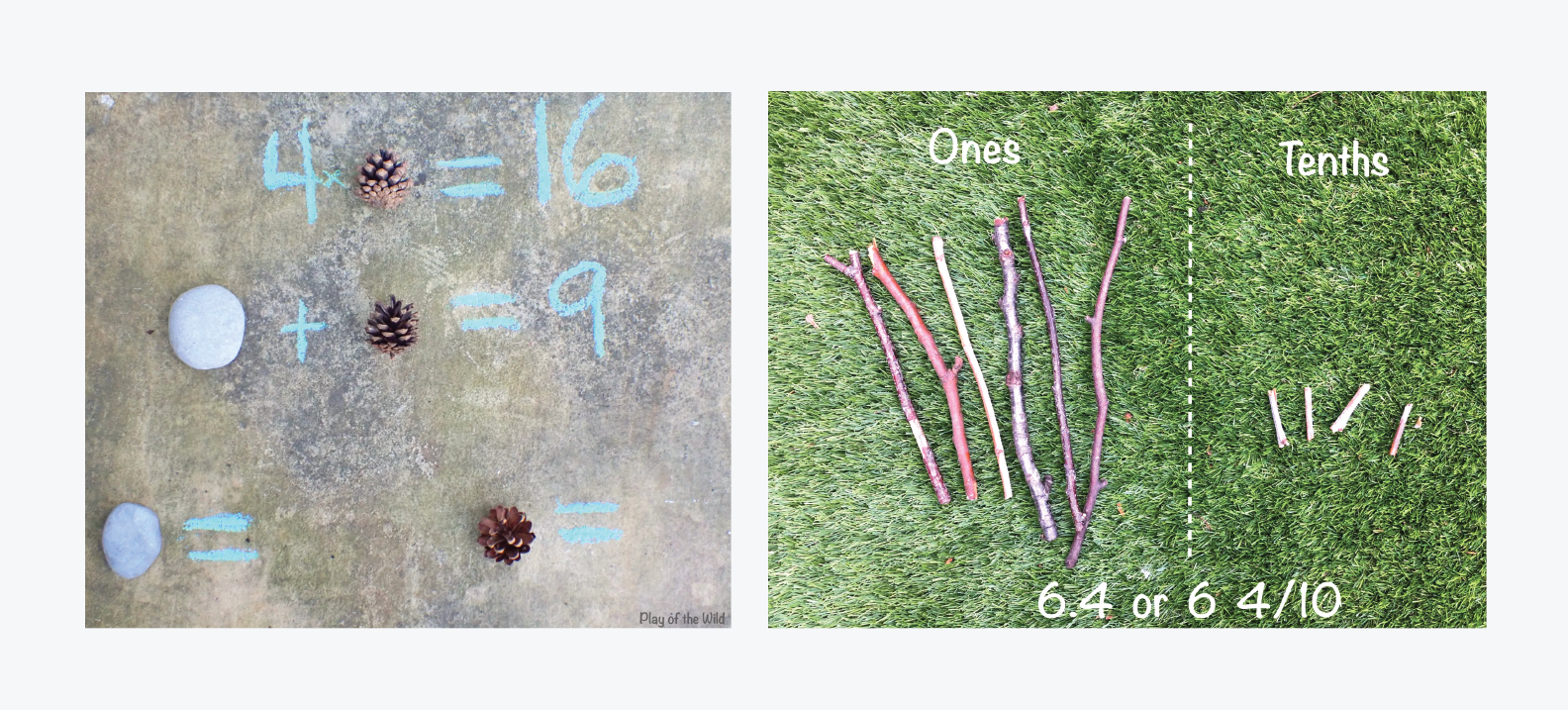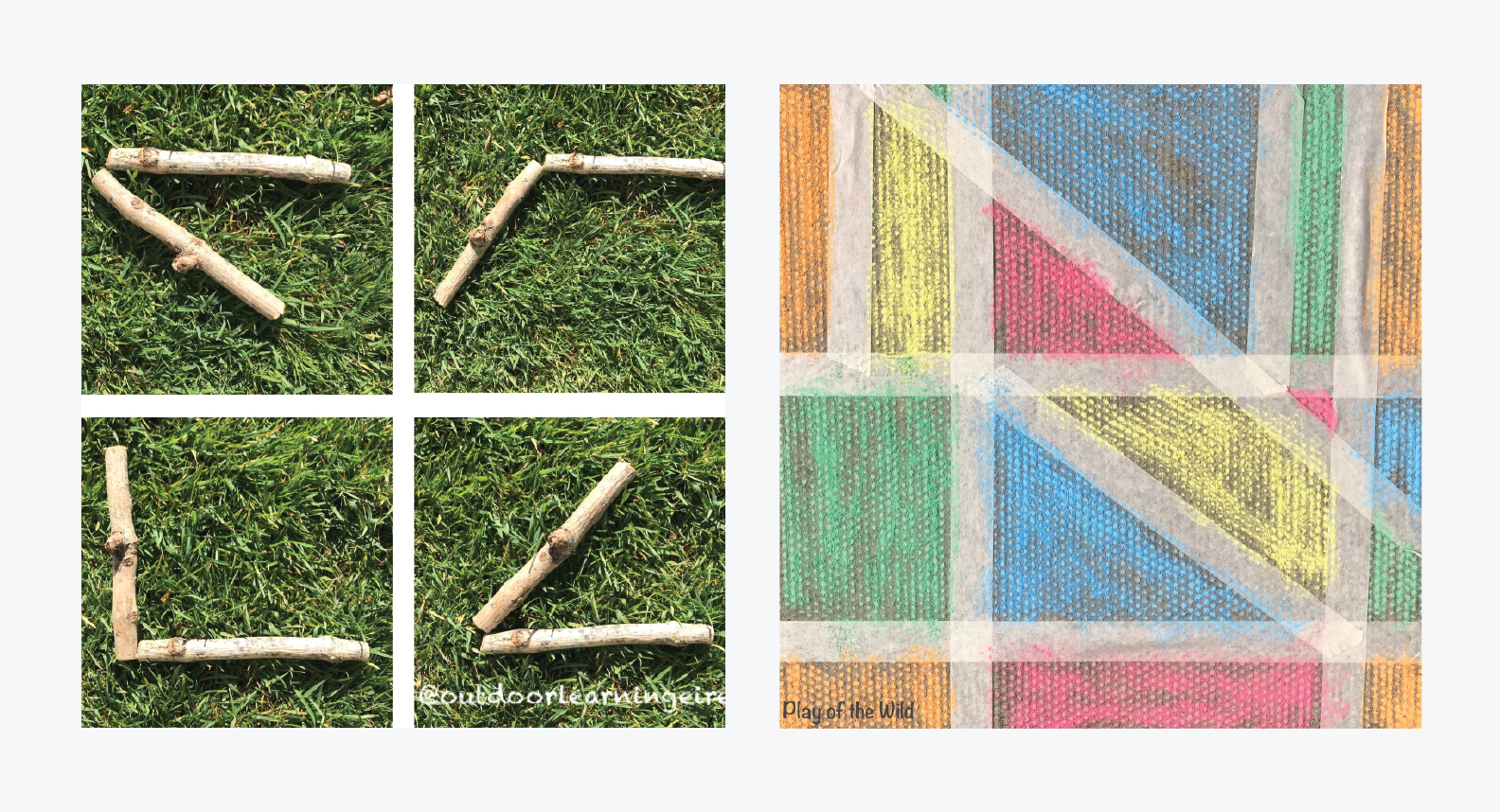Outdoor maths teaching inspiration for the summer term
Inspiring and nurturing a love of maths through outdoor learning.
As the weather gets warmer and classrooms get stuffier, outdoor learning is a great outlet during the summer term. Learning outdoors offers excitement, a change of scenery, space and countless natural learning opportunities.
The Education Endowment Foundation (EEF) recommends that time should be dedicated for children to learn mathematics in different environments. In addition to this, the EEF suggests that outdoor learning supports disadvantaged pupils to participate in activities that they otherwise might not have access to. Through implementing outdoor learning, all children gain new experiences that can motivate and re-engage learners who don’t necessarily thrive in the classroom.
Outdoor learning ideas
Number
To build good maths understanding, children should have strong foundations in number and place value. Mastering number outdoors and in different contexts helps to build these strong foundations.
KS1
Using natural objects to support counting and identifying numbers is a simple and effective strategy. Key Stage 1 (KS1) children can independently or in groups, match numbers to amounts and count using the outdoor space. Why not practise finding one more and less, counting, number recognition, number writing and simple addition and subtraction using objects found outdoors?

Pupils can use outdoor objects to learn counting and identify numbers.
Image: www.Fun-A-Day.com
Image: www.playofthewild.com
KS2
Much like with KS1, natural objects can easily support children’s understanding of number and place value. Instead of each object representing 1, Key Stage 2 (KS2) children can use objects found outdoors to represent tens of thousands, thousands, hundreds, tens, ones, tenths, hundredths and thousandths. They could even use outdoor items to create missing number sentences when learning about algebra.

Outdoor objects can support more complex ideas like variables and place value.
Images: www.playofthewild.com
Transform Your Maths Assessment
Insights — our online assessment tool — gives you instant, powerful data to identify gaps and improve results.

Data collection and statistics
KS1
Getting outdoors for statistics lessons is the perfect way for children to collect data. For example, discrete data in KS1, children can create tally charts of how many flowers they see outside or create a simple pictogram or Venn diagram using colours found on the playground.

The outdoors provides many opportunities for statistics lessons.
Images: www.playofthewild.com
KS2
There is lots of scope for outdoor statistics lessons, for example, continuous data could be collected by measuring how many children are on the playground over time and then a line graph could be created with chalk on the playground to present this data.
Often children can feel overwhelmed by the technicalities of drawing graphs. By giving them the freedom to experiment and draw graphs large on the playground, it will help to build confidence in constructing their own line graphs, deciding on an appropriate scale to use and using labels.

Having the space to draw large graphs helps build confidence.
Images: www.creativestarlearning.co.uk
Shape and angles
KS1
Of course angles and shapes are everywhere in nature, which makes the playground the perfect place to teach geometry lessons.
Shape hunt — Get your class outside for a shape hunt, where they can identify shapes in nature
Making shapes — Using sticks, flowers, chalk or leaves, children could make and draw different shapes and discuss their properties
String shapes — Using string, pairs and groups of children can manipulate the string to make different shapes and observe the differences in properties such as numbers of sides

Outside in nature is the perfect place to learn about angles and shapes.
Image: www.playofthewild.com
Image: www.laughingkidslearn.com
KS2
3D shape — children and groups can recognise, describe and build simple 3D shapes, including making nets using materials found outdoors. This doubles up as a great team-building exercise.
Angle hunts — Children can go on a hunt to identify different angles in both natural and manmade objects and discuss their findings. This is the perfect opportunity to teach acute, obtuse and reflex angles
Measuring angles — As well as hunting for angles, children can make angles using sticks or even masking tape and chalk on the playground. These angles can then be estimated and measured

Pupils can use outdoor material to create simple 3D shapes.
Measure
For both key stages, measure lends itself brilliantly to outdoor exploration and the National Curriculum strands can easily be incorporated into outside learning.
Length, height and width can be estimated and then measured using a tape measure, ruler or trundle wheel. Lengths of sticks can be ordered and compared and stones can be estimated and weighed. If you’re feeling brave, capacity lessons can be taken outdoors and children can explore millilitres and litres with water jugs.
KS1 Time
Making their own clocks with hula hoops and chalk is a great way to teach half past, and o’clock. Children can work in pairs to draw the time and ask their partner to tell the time. Click here for some ideas to help with outdoor learning and telling the time, from Experience Outdoors.
KS2 Time
Older children can create their own clocks using natural materials or chalk and tell the time in 5-minute intervals. Why not use some time word problems for children to solve using their clocks? Click here for more ideas about making outdoor clocks with natural materials, from Sun Hats & Wellie Boots.
Children and adults thrive outdoors, especially on a lovely day! It is important to remember you don’t need equipment or manipulatives, just the confidence to take your class outside to explore with things like sticks, flowers and chalk. Despite views that outdoor learning is for younger years, whatever the curriculum strand you are teaching, you can incorporate this into outdoor learning for older children too.
Research shows outdoor learning not only boosts confidence, social skills, communication, motivation, knowledge and understanding but also increases children’s self-esteem, teamwork and attitude to learning — so why not plan your next maths lesson outdoors?

